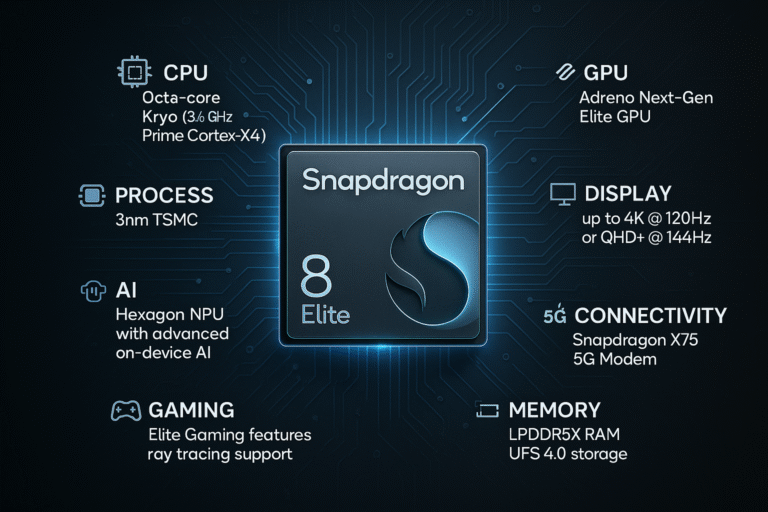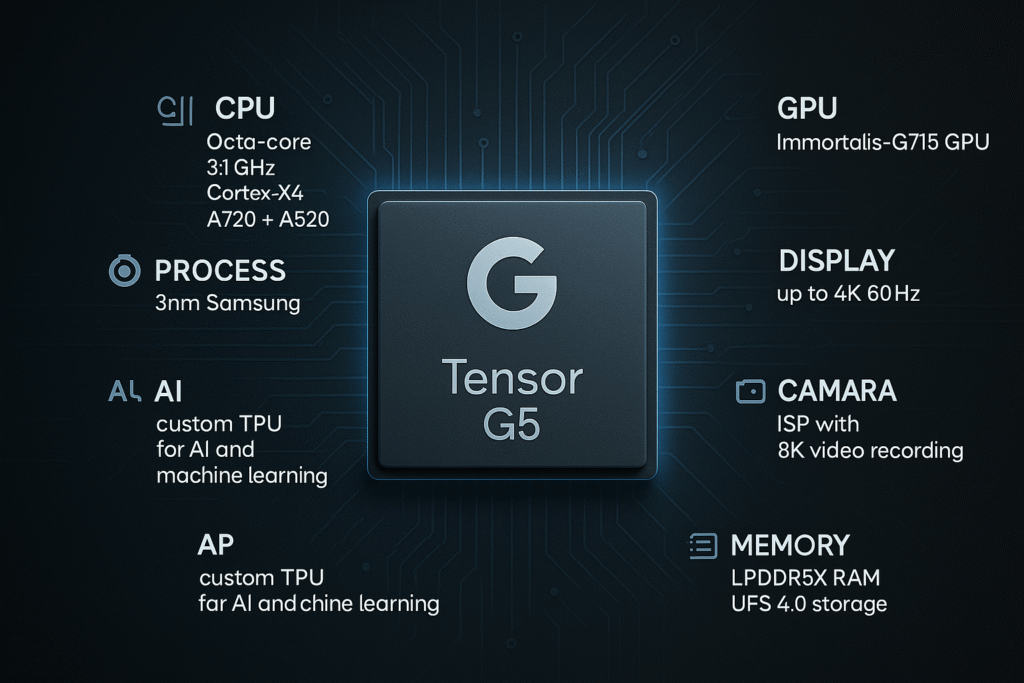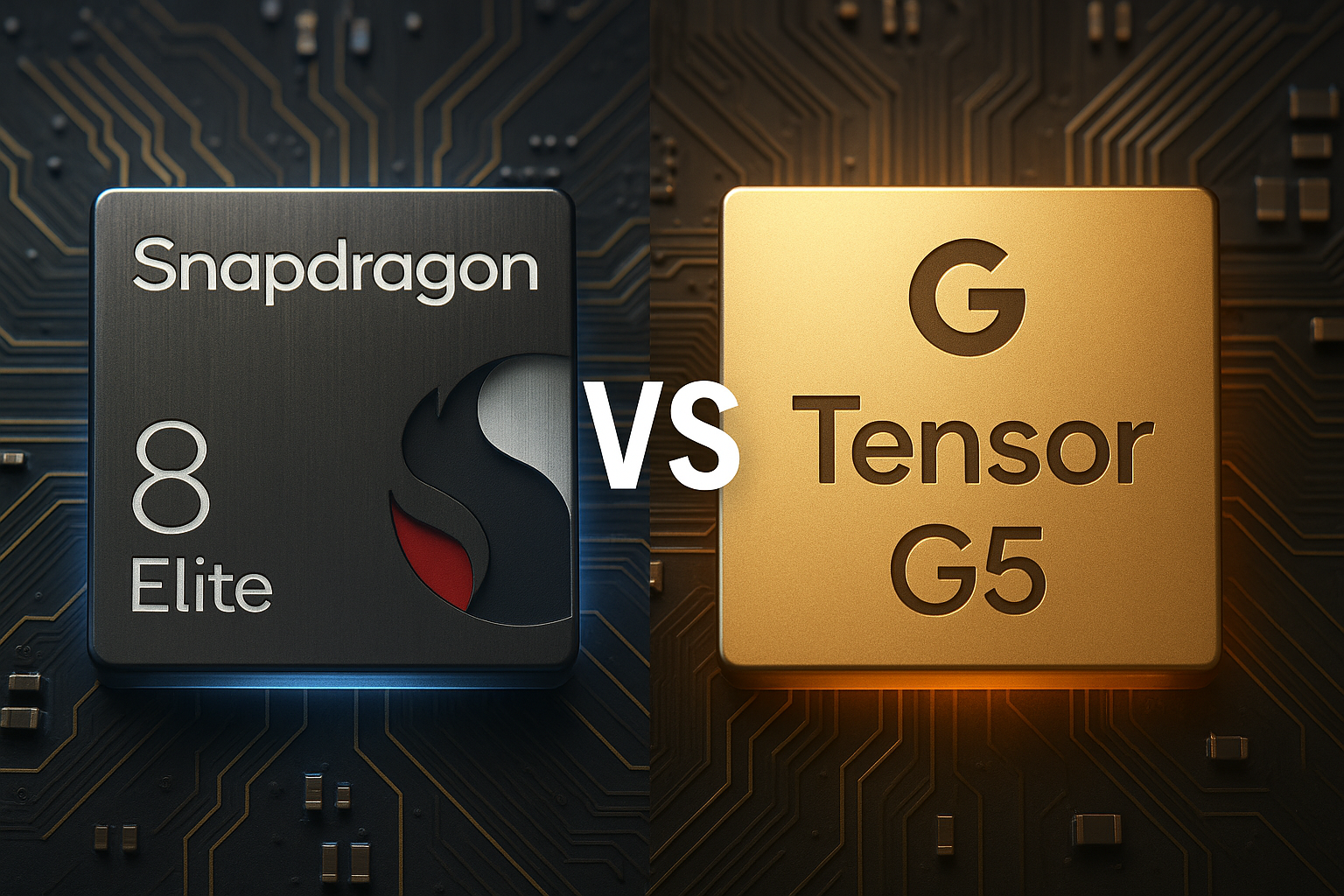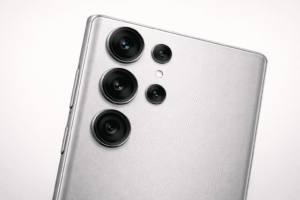Alright, let’s settle this. If you’re into phones, you’ve heard the buzz. In one corner, we’ve got Qualcomm’s heavyweight champ, the Snapdragon 8 Elite. It’s the processor that powers pretty much every other top-tier Android phone, and it’s all about raw, unapologetic power. In the other corner, there’s Google’s homegrown contender, the Tensor G5. It doesn’t try to win on brute strength; instead, it’s betting big on a smarter, AI-first approach. So, which one actually deserves a spot in your pocket? Let’s break it down without all the marketing fluff.
Benchmarks: The Numbers Don't Lie

Let’s be real, everyone loves a good benchmark score. It’s the easiest way to compare performance, and here, the Snapdragon 8 Elite isn’t just winning—it’s absolutely dominating.
Think of the AnTuTu benchmark as a full-system exam. The Snapdragon 8 Elite scores a mind-boggling 2.75 million points. The Tensor G5? It comes in at a respectable but much lower 1.29 million. That’s a huge gap. Digging deeper, the difference in graphics performance is even more dramatic. The Snapdragon’s GPU mopped the floor with Tensor’s, scoring over a million points more. For gamers, that’s the only stat that really matters.
On CPU tests like Geekbench 6, the story continues. The Snapdragon’s single-core score is about a third faster, and its multi-core score is a whopping 50% higher. In plain English, this means phones with the Snapdragon chip will feel snappier when you’re flipping between apps, editing 4K video, or doing anything that demands serious grunt.
You can’t understand this battle without looking at the completely different goals of each company.
Qualcomm built the Snapdragon 8 Elite to be a beast. It uses a “2+6” setup with its custom Oryon cores, with two of them screaming along at over 4.3 GHz. It’s built on a cutting-edge 3nm process and includes a monster GPU that handles advanced gaming features like ray tracing. This chip is designed to win spec sheets.
Google took a different path with the Tensor G5. While it’s also on a 3nm process, its CPU uses a more traditional “1+5+2” layout with Arm cores. More importantly, Google made a surprising switch from Arm’s Mali graphics to a PowerVR GPU, a move that raised a lot of eyebrows. Google isn’t trying to win the peak speed race. They’re designing the chip to be efficient and stay cool while it handles a constant stream of AI tasks in the background. It’s about the long game, not the short sprint.
Gaming: No Contest, Seriously

If you play anything more intensive than Candy Crush, this is the easiest decision you’ll make. The Snapdragon 8 Elite is in a completely different league. In graphics benchmarks, it pushes out nearly double the frames per second compared to the Tensor G5.
The Tensor G5 did improve its graphics performance over last year’s model by about 27%, which is great. But there’s a catch: it gets hot. After just a few minutes of intense gaming, the phone heats up and the processor has to throttle down its speed to cool off, causing performance to drop right back down. The Snapdragon gets warm too, but it manages its heat better, maintaining a much more consistent frame rate during longer sessions. Plus, that ray tracing support? It just makes games look more realistic. For a mobile gamer, the Snapdragon is the only choice.
Where Tensor Fights Back: AI and Smarts
Okay, so the Tensor G5 isn’t a gaming chip. Where does it actually shine? This is where Google’s vision gets interesting. The Tensor G5’s secret weapon is its next-gen Edge TPU (its AI engine).
Google says this part is up to 60% more powerful and can run its Gemini Nano AI model 2.6 times faster. This isn’t just about a slightly faster voice assistant. This power enables cool, exclusive features on Pixel phones. Think of things like automatically summarizing your recordings, generating clever replies for you, or helping you fix a blurry photo—all done on the device itself for privacy and speed.
While the Snapdragon has a powerful AI engine too, Google’s tight control over both the chip and the Android software allows for a level of integration that others can’t match. The Tensor chip is the reason Pixel cameras can pull off their computational photography magic, making your photos look amazing even with less impressive hardware.
Camera, Connectivity, and Battery Life
Both chips are fantastic for photography, but they excel in different ways. The Tensor G5’s new image processor is built for Google’s computational photography, enabling awesome video features and that legendary Pixel photo quality. The Snapdragon 8 Elite, however, supports absolutely insane hardware, like 320MP sensors and buttery-smooth 8K HDR video recording. It’s a tie: pick Tensor for software magic, Snapdragon for hardware potential.
For connectivity, Snapdragon takes the crown again. Its built-in X80 modem is the best in the business, offering blistering 5G and Wi-Fi 7 speeds. The Tensor G5 uses a Samsung modem, which is decent and has improved, but it still can’t match the peak speeds or rock-solid reliability of Qualcomm’s offering.
Battery life is tricky. Google claims the Pixel 10 with the Tensor G5 will last “over 30 hours,” a big jump from before. And in general, day-to-day use, it’s very efficient. However, when you push both chips to their limits, the Snapdragon does more work for the same amount of power. So, for light use, Tensor might last longer, but for heavy use, Snapdragon is more efficient.
The Bottom Line: Who's It For?
So, which chip should you choose? It all comes down to what kind of phone user you are.
Choose the Snapdragon 8 Elite if: You’re a power user, a mobile gamer, or just someone who wants the absolute fastest and most powerful phone on the planet. You want the best modem, the best graphics, and top-tier performance in every single category. You’re probably looking at phones like the Samsung Galaxy S25 Ultra or other premium flagships.
Choose the Tensor G5 if: You care more about a smart, seamless experience than raw benchmarks. You love the idea of AI features that feel like magic, you’re a photography nut who trusts Pixel’s camera processing, and you live deep within the Google ecosystem. You value Google’s vision of a helpful, ambient phone over a purely powerful one.
In the end, the Snapdragon 8 Elite is the undisputed performance king. But the Tensor G5 isn’t really trying to be king; it’s trying to be the court wizard, and for a lot of people, that’s way more compelling.
FAQ
Okay, but can I actually play games on a Tensor G5 phone?
Sure you can! It’ll handle most games just fine. But if you’re serious about mobile gaming—playing at the highest settings, with high frame rates, for long sessions—the Snapdragon is in another league. The difference in smoothness and detail is very noticeable.
Are the AI features on the Tensor really that big of a deal?
For the right person, yes. Things like call screening, live translation, and magical photo editing happen instantly and on the device. If you use them, they feel like glimpses of the future. The Snapdragon can do AI stuff too, but Google’s features are more deeply integrated and feel more polished.
Which chip gives me better battery life?
It depends on how you use your phone. For general scrolling, messaging, and video watching, the Tensor G5 is very efficient and should get you through a long day. If you’re constantly doing heavy tasks like gaming or video editing, the Snapdragon manages its power more efficiently under load, so it might actually be better.
I've heard Pixel phones have bad modems. Is that fixed?
The Tensor G5 uses a newer Samsung modem that’s better than the ones in older Tensor chips. It’s perfectly good for most people. However, Qualcomm has been making the best modems for years, so the Snapdragon still has a slight edge in overall signal strength and peak download speeds, especially in tricky areas.
Is the Tensor G5 better than old Snapdragon chips?
Yeah, it’s competitive with a Snapdragon 8 Gen 2 (from two generations ago). It even beats it in some CPU tasks but still falls behind in graphics. So it’s a capable chip, it’s just not competing with the current flagship Snapdragon.







